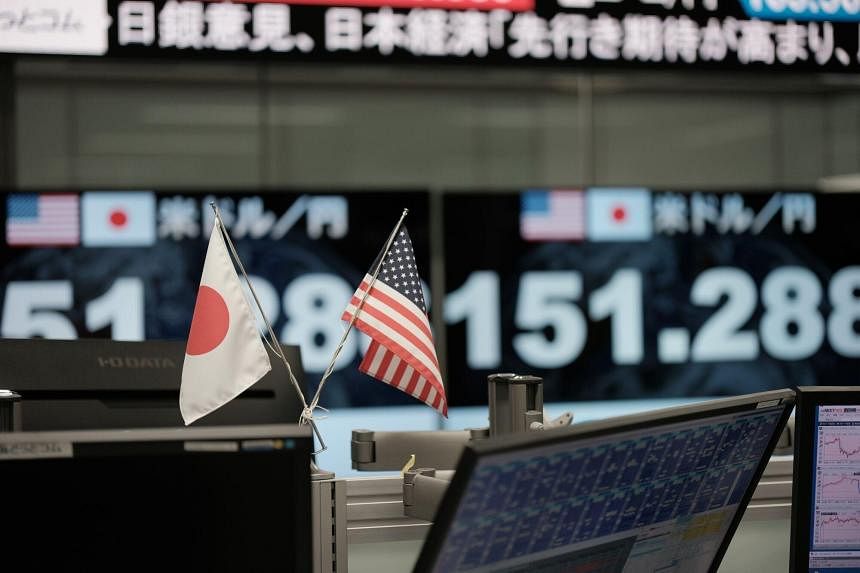TOKYO – Japan has warned that it will consider all options to combat weakness in the yen after the currency slumped to its weakest level against the US dollar since 1990.
Following weeks of flirting with the closely watched 152 level versus the greenback, the yen blew straight through this mark on April 10 and dropped below 153 as US inflation data reverberated through global markets.
That has put traders on alert for intervention by the Japanese authorities, whose jawboning of markets has done little to change the downward momentum.
“Whether this involves currency intervention or not, we authorities are prepared for all situations all the time,” Mr Masato Kanda, Japan’s top currency official, told reporters on April 11.
Finance Minister Shunichi Suzuki later echoed that warning, telling reporters officials are watching currencies “with a high sense of urgency”.
The latest decline in the yen was triggered by consumer price readings that prompted investors to push back expectations for interest rate cuts by the Federal Reserve in 2024. That suggests that the US interest rate gap with Japan will remain wide for longer.
Mr Kanda on April 11 stopped short of warning that the authorities were ready to take “bold” measures, which is among the most direct references to action in the ministry’s playbook.
“Intervention could take place any time now. Given the yen level, it wouldn’t be strange for officials to intervene tomorrow, for example, just to buy some time,” said Mr Takeshi Minami, chief economist at Norinchukin Research Institute.
“The yen moves are driven by market bets for Fed rate cuts, so Japan’s action alone probably wouldn’t be a game changer.”
Japanese officials have repeatedly said they are not defending specific yen levels, but are keeping an eye out for excessive movements. That is a stance that helps them justify stepping into the market while staying largely in line with international agreements that markets should determine levels.
By one measure, the yen volatility is not high enough yet to trigger market intervention. Mr Kanda said in February that a 10-yen move over one month against the US dollar is considered rapid. He said last month that a 4 per cent move over two weeks does not reflect fundamentals and is unusual. After recovering to around 152.90 against the US dollar earlier on April 11, it was down to 153.22 as at 5.30pm Singapore time.
Against the Singapore dollar, the yen dipped 0.06 per cent to 113.20.
Market caution of intervention remains high. Very few short-term funds were willing to chase the US dollar higher against the yen in recent sessions by buying call options on the currency pair, due to concern Japan may enter the market, traders said.
Japan intervened in markets three times in 2022 to prop up the yen after the currency weakened to 151.95 against the US dollar. Tokyo spent more than US$60 billion (S$81 billion) in that campaign, which was conducted largely without criticism from international allies, including the United States.
Mr Suzuki was the last official to reference taking bold action, doing so in March. On April 11, Mr Suzuki followed up his remarks to reporters by noting in Parliament that he was concerned about the potential impact of the weak yen on inflation.
Mr Kanda said the benefits of the weak yen are decreasing, and movements in the market have been rapid of late.
“Some people benefit and some are hurt, but there’s no doubt that the advantages are decreasing,” Mr Kanda said. “It’s no longer necessarily about companies benefiting.”
Even big companies that have profited from the weak yen are expressing concerns over its recent moves. Mr Masakazu Tokura, head of Japan’s biggest business lobby group known as Keidanren, said earlier this week that the yen’s current weakness is “excessive”. BLOOMBERG

